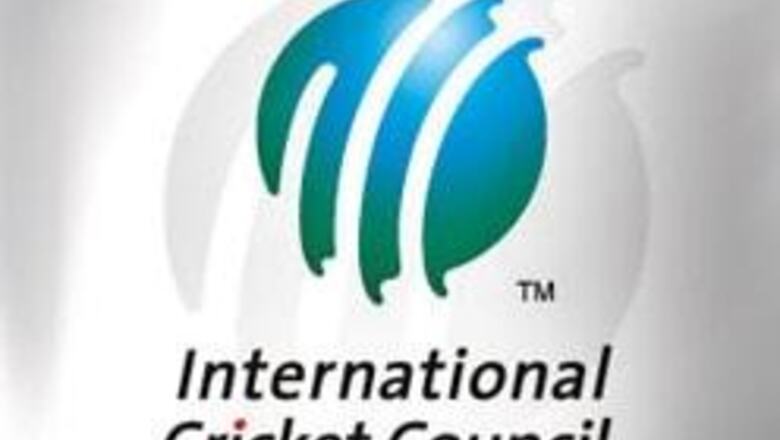
views
Mumbai: The International Cricket Council has issued new directions to umpires about consulting the third TV official over catches and run outs where there is doubt over a fielder infringing the boundary line.
The clarification from the game's governing body on Tuesday follows an incident concerning the validity of a boundary catch during the first test between West Indies and India in Antigua and is to be applied with immediate effect.
Mahendra Singh Dhoni launched a ball from spinner Dave Mohammed towards the mid-wicket boundary in the second innings where Daren Ganga claimed the catch.
There were doubts whether the fielder was touching the boundary rope, but with the TV replays inconclusive the batsman held his ground.
Dhoni left after West Indies skipper Brian Lara asked him to take the fielder's word for it.
According to the protocol, the on-field umpires can refer the boundary decision to the TV umpire in such a situation in accordance with the ICC's playing conditions.
But the TV umpire has the responsibility to make a decision solely on whether a boundary has been scored.
"If the TV replay evidence is inconclusive, the TV umpire must still make a boundary decision," an ICC statement said.
"His decision must be made using the existing convention in cricket which dictates that the status quo prevails - i.e. because no evidence exists of a boundary being scored, no boundary is awarded.
"This decision is conveyed back to the on-field umpires. In these circumstances, as no boundary has been scored, the only decision left is for the on-field umpire at the bowler's end to give the batsman out - caught."
The same protocol would also apply to a run out decision in circumstances where it is questionable whether a boundary has been scored.
"In such circumstances, the TV umpire must first make a decision on that boundary," the statement said.
"Once this decision has been made the on-field umpires can then decide whether or not to refer the run out appeal to the TV umpire."

















Comments
0 comment